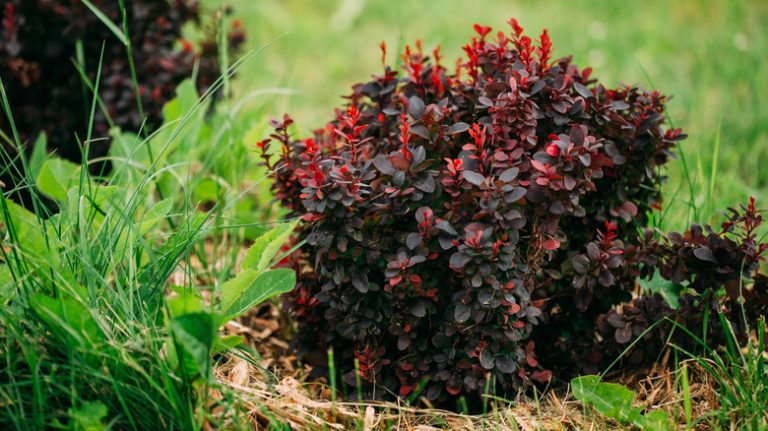If you’ve ever been near a mountainous area in Texas, you’ve probably noticed the beautiful blossoms of the Mountain Laurel. This native plant is known for its bright and maroon flowers, which bloom in late winter. Mountain Laurels thrive in shade and are often found in heath-like soils. They are slow-growing and low maintenance, making them a popular choice for landscapes.
Mountain Laurels are well-suited to the unique soils of Texas and other areas where they are grown. They can adapt to a variety of soil types, but prefer well-drained soils. If you’re planting Mountain Laurels, make sure the soil is well-drained and amend as needed. They need full or partial shade to thrive and should be kept away from harsh winter winds.
Mountain Laurels are often grown by wholesale nurseries and retail nurseries in containers for easy transport. They can also be found in special wholesale nurseries that specialize in native plants. When buying Mountain Laurels, please keep in mind that they are slow-growing and may take a few years to reach their full size.
To care for Mountain Laurels, it is important to provide them with regular water and fertilizer. They have dark green leaves, which add to their overall beauty. Some people believe that Mountain Laurels have a special link to nature and their foliage is often used in landscaping projects.
In conclusion, Mountain Laurels are a beautiful native plant with bright and maroon blossoms. They are shade-tolerant and thrive in heath-like soils. Mountain Laurels are slow-growing and low maintenance, making them a great choice for landscapes. So if you’re looking for a stunning plant that will add beauty to your garden, consider planting a Mountain Laurel.
Mountain Laurel: Growing Care Of Mountain Laurel In The Landscape
Mountain laurel, also known as Kalmia latifolia, is a native plant that is highly valued for its beautiful blossoms and shade-tolerant nature. This large shrub or small tree is a popular choice among gardeners, especially those looking to add a touch of beauty to their landscape.
Growing mountain laurel requires some effort, as it prefers well-drained soils and a partially shaded location. However, with the right care, this native plant can thrive and add a stunning accent to your garden or landscape.
Mountain laurel can be grown in a variety of climates, but it is particularly well-suited to the mountainous regions of the eastern United States. In fact, it is the state flower of Connecticut, where it is commonly found in the city of Hamden.
This shade-tolerant plant also has attractive foliage, with leaves that are darker green on top and lighter green underneath. The leaves remain on the plant year-round, providing interest even in the winter months.
While the beautiful blossoms are the main attraction of the mountain laurel, the foliage is also a standout feature. The bright green leaves provide a lush backdrop for the clusters of flowers that appear in late spring or early summer. The blossoms can vary in color, ranging from white to pink to red, and often have intricate patterns and markings.
To successfully grow mountain laurel, it is important to provide the right conditions for this shade-tolerant plant. It prefers well-drained soils, but can tolerate a range of soil types as long as they are not overly wet. If your soil is heavy or clayey, you may need to amend it with organic matter to improve drainage.
A partially shaded location is ideal for growing mountain laurel, as it does not do well in full sun. It can tolerate some sun, especially morning sun, but too much sun can cause the leaves to burn. If you are planting mountain laurel in a sunny area, consider planting it near taller plants or trees that can provide some shade.
In terms of cultivation, mountain laurel is relatively low-maintenance. It does not typically require pruning, unless you want to remove any dead or damaged branches. It has minimal pest and disease issues, although it can be susceptible to leaf spot and twig blight. Regular inspection of the plant and prompt treatment if any issues arise can help prevent serious damage.
So, if you are looking to add a touch of nature to your landscape, consider planting mountain laurel. With its beautiful blossoms and shade-tolerant nature, it is sure to be a standout in your garden.
For more information on growing and caring for mountain laurel, check out our latest articles on the subject.
Mountain Laurel Information
Mountain laurel is a shade-tolerant native shrub that is grown for its bright and beautiful blossoms. If you’ve ever seen a mountain laurel in full bloom, you know why it is considered one of the superstars of the flowering shrub world. But what exactly is mountain laurel, and what are its needs?
Mountain laurel, or Kalmia latifolia, is a native shrub that is commonly found in mountainous areas. It is a shade-tolerant plant, meaning it can thrive in areas with less sunlight. This makes it a great choice for gardeners who have shady yards or want to create a woodland-style garden.
Mountain laurel is typically grown in well-drained soils, and it prefers acidic soil with a pH between 4.5 and 6.0. If your soil is alkaline, you may need to amend it with sulfur or other acidic materials to create a more suitable growing environment for your mountain laurel.
In terms of cultivation, mountain laurel can be planted in the ground or in a containerized setting. If you choose to plant it in the ground, be sure to follow the recommended planting guidelines for your specific region. Mountain laurel is usually planted in the late fall or early spring.
When it comes to fertilizing mountain laurel, less is more. Mountain laurel is a low-maintenance plant and doesn’t require much fertilizer. In fact, over-fertilizing can be harmful to the plant. It is best to use a slow-release fertilizer, and apply it in late winter or early spring.
Mountain laurel is known for its beautiful blossoms, which typically appear in late spring or early summer. The flowers come in a variety of colors, including pink, white, and red. Some cultivars even have gold or multicolored blossoms. The blossoms of mountain laurel attract bees and other pollinators, making it a great choice for an ecological garden.
In summary, mountain laurel is a shade-tolerant native shrub that is prized for its beautiful blossoms. It can be grown in a variety of soil types, but prefers well-drained, acidic soils. Mountain laurel is a low-maintenance plant that doesn’t require much fertilizer. It is a great choice for gardeners who want to add a touch of beauty to their shady yards or woodland-style gardens.
How to Grow a Mountain Laurel
Mountain laurels are the superstars of any garden, thanks to their beautiful blossoms and shade-tolerant nature. If you are wondering how to grow a mountain laurel, here are some key steps to follow:
| Step 1: | Determine the perfect location in your garden. Mountain laurels prefer partial shade, so find a spot that provides a few hours of direct sunlight but is also shaded for the majority of the day. |
| Step 2: | Prepare the soil. Mountain laurels do best in well-draining, slightly acidic soils. If your soil is heavy or clay-like, amend it with organic matter, such as compost or peat moss, to improve drainage. |
| Step 3: | Plant the mountain laurel. Dig a hole that is twice as wide and just as deep as the root ball of the nursery plant. Place the plant in the hole and backfill with soil, gently firming it around the roots. |
| Step 4: | Water the newly planted mountain laurel thoroughly. Keep the soil consistently moist, but not waterlogged. Mulching around the base of the plant can help retain moisture. |
| Step 5: | Provide regular care and maintenance. Mountain laurels are relatively low-maintenance shrubs. Prune them after they finish flowering to maintain their shape and remove any dead or damaged branches. |
| Step 6: | Enjoy the beautiful blossoms and foliage of your mountain laurel. These native shrubs show off their vibrant flowers in late spring to early summer, and their evergreen leaves add interest to your landscape all year round. |
If you are located in Texas, where mountain laurels are native, you will find a wealth of information and nurseries that specialize in their cultivation. Texas mountain laurel is a particularly showy species with highly fragrant purple flowers.
If you have any related questions or need further assistance, please feel free to reach out to our experts. We are here to help you in your mountain laurel growing journey.
Care of Mountain Laurel
Mountain laurel (Kalmia latifolia) is a shade-tolerant native shrub with beautiful blossoms. It’s a perl of the heath family and can be found in the mountainous regions of the eastern United States, particularly in Texas.
Mountain laurel is slow-growing and won’t grow well in wholesale soils. It prefers well-drained and acidic soils. The foliage of mountain laurel is shade-tolerant, making it a great addition to a garden or landscape where there is limited sunlight. It is also a great choice for containerized cultivation.
When it comes to caring for mountain laurel, it’s important to provide it with the right conditions. It thrives in full sun to partial shade, so you should place it in a location that receives at least 4-6 hours of sunlight per day. If you’re unsure about the acidity level of your soil, you might want to perform a soil test to determine its pH and make any necessary adjustments.
Mountain laurel doesn’t require much maintenance, but it does benefit from regular watering, especially during dry periods. However, it’s important to avoid overwatering, as this can cause root rot. Applying a layer of mulch around the base of the plant can help with moisture retention and weed control.
When it comes to fertilizing mountain laurel, it’s best to do so in late winter or early spring, using a slow-release fertilizer specifically formulated for acid-loving plants. Be sure to follow the instructions on the fertilizer package for the correct application rate.
In the winter, mountain laurel may experience some browning or winter burn on the leaves. This is normal and doesn’t indicate a serious problem. However, if the entire plant appears dead or severely damaged, it may be necessary to prune it back to encourage new growth in the spring.
In conclusion, mountain laurel is a beautiful and ecological plant that is native to the mountainous regions of the eastern United States. With proper care and maintenance, it can thrive in a variety of garden settings, whether in the ground or in a container. So, if you’re looking for a stunning shrub that is also low-maintenance, consider adding mountain laurel to your garden. You won’t be disappointed!




